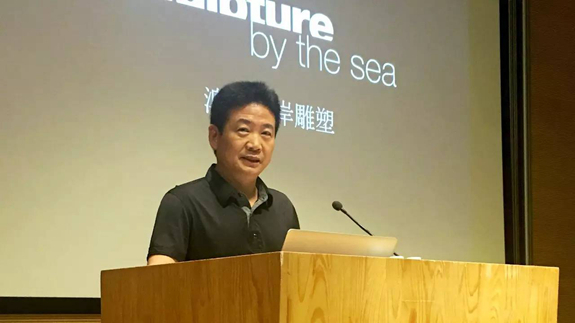
On June 22, 2017, the lecture “Sculpture by the Sea: Chinese Sculptors, International Sculptors, Huge Crowds and Huge Waves” was held at the Lecture Hall of CAFA Art Museum. The lecture invited David Handley, Founding Director of the “Sculpture by the Sea” exhibition in Australia, as the keynote speaker to introduce the development and prospect of this exhibition, as well as the participation of Chinese artists and international artists, presenting this international event to the Chinese public for the first time. The lecture was hosted by Professor Lv Pinchang, director and doctoral supervisor of the Department of Sculpture of CAFA, and was proposed and planned by Professor Sui Jianguo. Mr. Sui Jianguo and Mr. Chen Wenling also attended the event.

Zhang Zikang, Director of CAFA Art Museum, was making the opening remarks
Zhang Zikang, Director of CAFA Art Museum, made the opening remarks to introduce the exhibition. As one of the most popular events in Sydney, “Sculpture by the Sea” is a coastal exhibition featuring contemporary elaborated sculptures on the coastal walk between Bondi and Tamarama beaches. This exhibition has attracted nearly half a million visitors from all over the world to see more than a hundred sculptures by artists from both Australia and around the world in an international and public way with free admission. The unique feature of this exhibition is that it breaks through the fixed mode of the art museum and becomes a venue for displaying public art by placing artworks in the outdoor environment. From October 19 to November 15, 2017, “Sculpture by the Sea” was opened again.
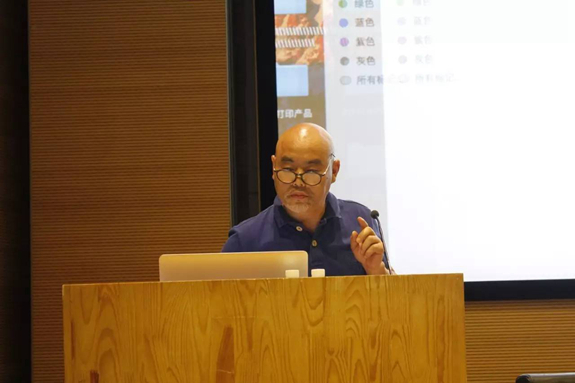
Presenter: Lv Pinchang, Director and doctoral supervisor of the Department of Sculpture, CAFA
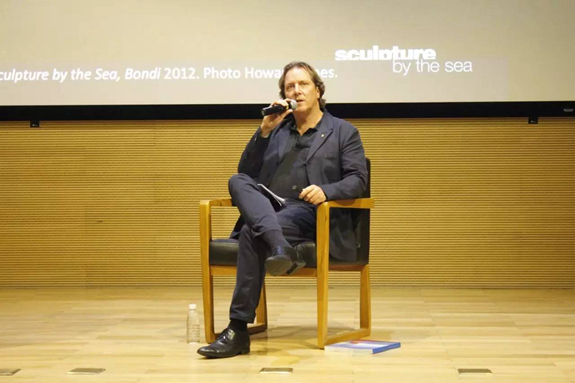
Speaker: David Handley, Founding Director of the “Sculpture by the Sea” in Australia
David Handley then introduced the development and prospect of the “Sculpture by the Sea” exhibition, as well as the participation of Chinese sculptors and international sculptors, showing his academic ideas.
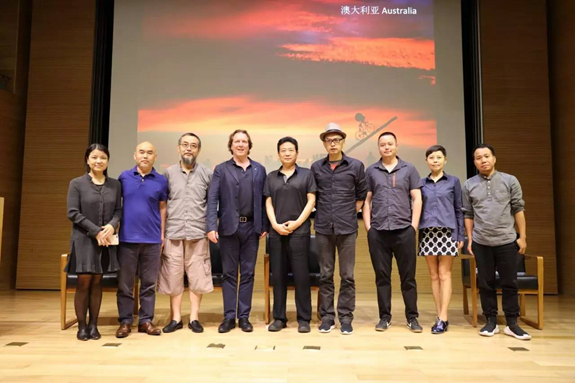
Group photo of attending guests
"Sculpture by the Sea" exhibition
The “Sculpture by the Sea” exhibition started in 1997 and was actually a dream of young David Handley that finally came true. He wanted to introduce Australia to the world in a comprehensive and cultural way, which is less commercial. He intended to organize a large, community-based, and free public art event.
After working as a lawyer for two years, David Handley left the business world for Prague, Czech Republic, where he set up a life motto, that is, he would only do things which are interesting and can be useful to the world. He came up with the idea of a sculpture exhibition after discovering that sculptures have a kind of dramatic properties. While the beaches of Australia are extraordinary as they actually look like sculptures in their natural appearance, he finally chose the beautiful coastline between Bondi and Tamarama beaches as the exhibition venue.
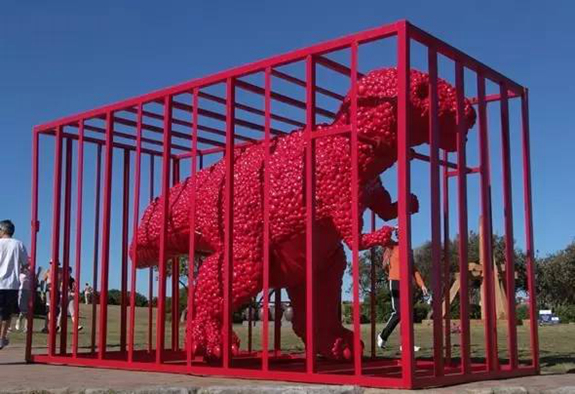
Professor Sui Jianguo’s first work on display in Sydney, Jurassic Age (1999), Bondi, 2004
Now, “Sculpture by the Sea” has grown into the largest outdoor public sculpture exhibition in Australia. Nevertheless, it was a small-scaled show at the beginning, and all the participants were unpaid volunteers. The budget for its first exhibition was only 400 Australian dollars, and the event attracted 25,000 people with 46 sculpture works just in one day. David Handley felt so great after the first exhibition ended, and both the media and the public gave good remarks to this sculpture exhibition held in the open air. In 1998, the second round of the exhibition went more smoothly, with a total budget of 360,000 Australian dollars that increased many times than the previous one.
However, for David Handley, the first seven years of this exhibition was filled with a mixture of both ecstasy and nightmare, with 350 days of a year being nightmares only 15 days pleasant. Because at the beginning of this coastal sculpture show, they had no budget at all, but in the eyes of the artists, public, and media, it was a remarkable art exhibition, and it offered many sculptors a chance to show their works. David Handley put it this way: the sculpture exhibition is a stage on which the artists are the stars, and the two kilometers of coastline is like a great stage for many artists to give a performance. That is why people are sitting here listening to him talking about an art exhibition, and why artists like Sui Jianguo and Chen Wenling participated in the exhibition.
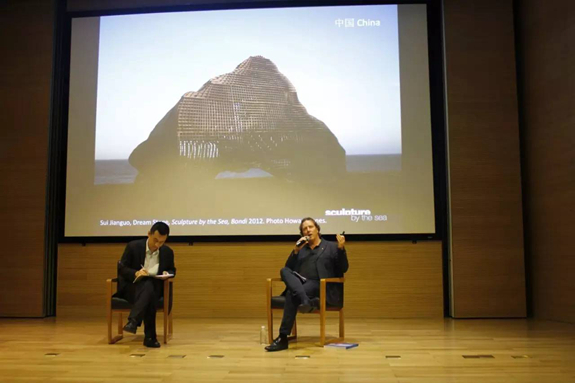
During the lecture
Therefore, what to do next to make the exhibition better? One of the biggest surprises was that collectors contacted them to buy works displayed in “Sculpture by the Sea”. Although this was not the original intention of David Handley, of course, those senior curators believed that this was a golden opportunity for the exhibition’s future development. Eventually, the new exhibition would be both for the public and for selling works. The commercialization is necessary because they want the exhibition to gradually develop and become mature so that the public can experience better exhibitions.
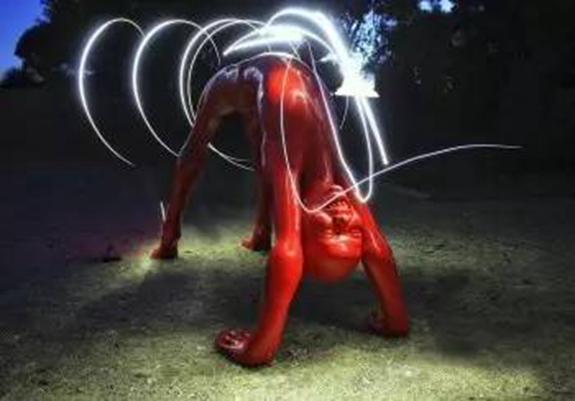
Chen Wenling, Rainbow, Bondi, 2013
As the founder and executive director of this exhibition, David Handley has had a core idea since the very beginning, that is, he must better support the artists. So, he uses his own rights to gain financial recourses from corporate sponsors, government, and private sponsors to support the development of the artists better. They have realized part of the mission, but it is far from enough.
Chinese sculptors and international sculptors
Back to the initial stage, one of the original purposes of David Handley was to introduce Australia comprehensively and culturally, which was not done enough. This exhibition can be considered as the most significant sculpture exhibition by the sea, but still far from enough, as there were no participating artists from China or India, which accounts for half of the world’s population. Therefore, in 2004, they invited professor Sui Jianguo, their first international sculptor outside Australia. In this way, it has become a tradition to invite foreign artists.
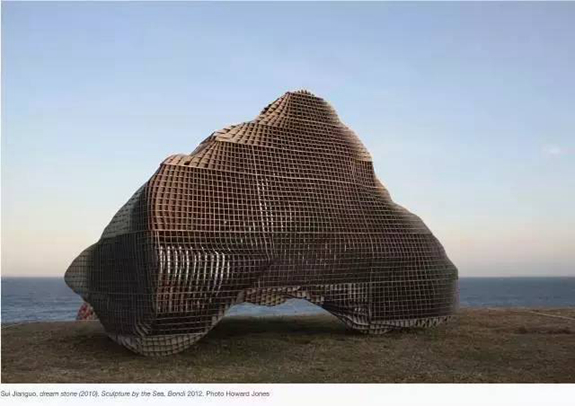
Sui Jianguo’s second work is on display in Sydney. Inspired by a pebble he picked up on a beach in Shanghai during the world expo, he made a work based on the enlarged shape of the stone.
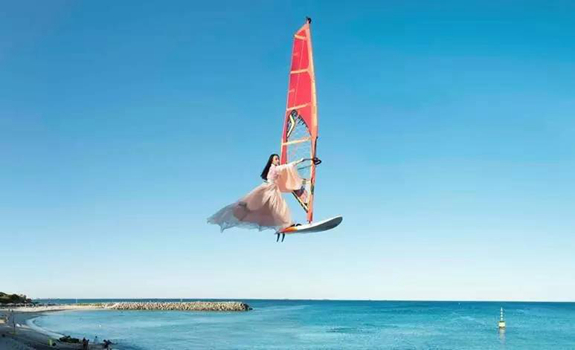
Li Wei, Surfing Cottesloe, Cottesloe, 2016
Thanks to an important sponsor, the annual show at the Perth-Cottesloe beach can invite a well-known sculptor, and two years ago, they invited Li Wei.
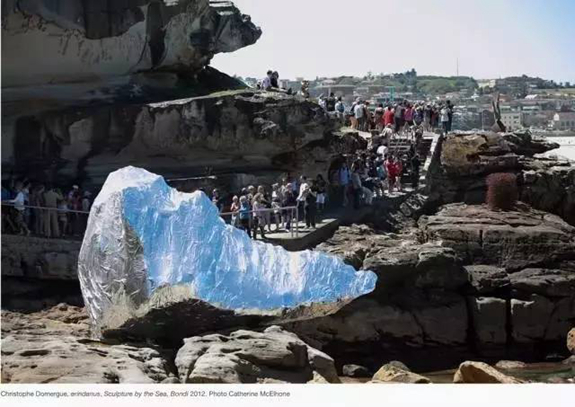
Another work was “Huge Crowds and Huge Waves”. Due to a large number of visitors, photographers have to get up early in the morning to capture the beautiful sculpture and scenery. The exhibition is installed on both sides, so there is a wonderful view of sunrise and sunset.
Then, David Handley presented a series of works to show the breadth of work origins and diversity of work types. Up to this day, 12 artists from China have participated in the exhibition, displaying a total of 33 sculptures. David Handley was also calling for more Chinese artists to join the sculpture exhibition by the sea.
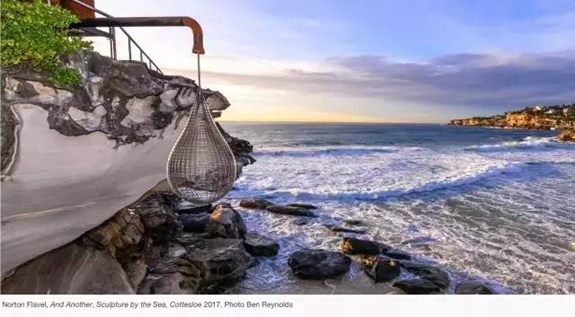
This work by Chinese artist Lu Zhengyuan looks like someone suffocating inside, which scared the children.

Nicole Larkin, Dynamics in Impermanence, Bondi, 2016. Photo/Gareth Carr.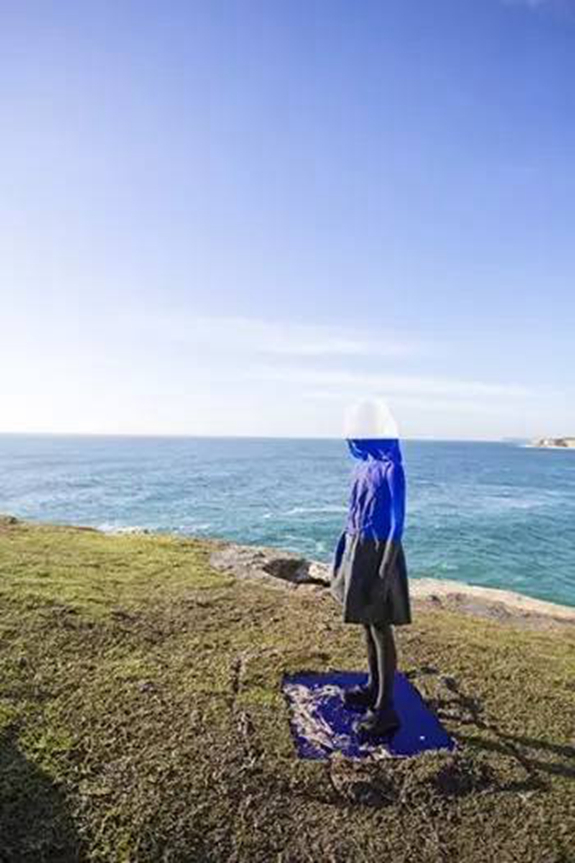
Alessandra Rossi, Untitled Coral, Bondi, 2016
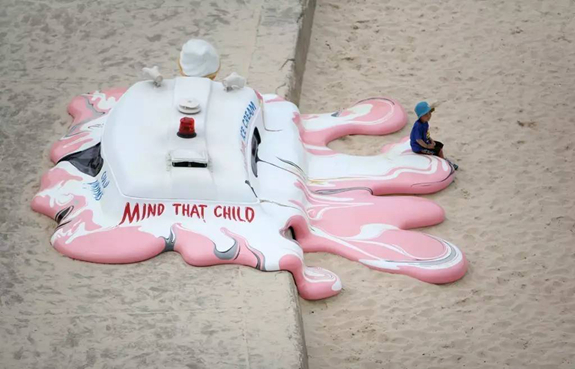
The Glue Society, Hot with the Chance Of a Late Storm, Bondi, 2006
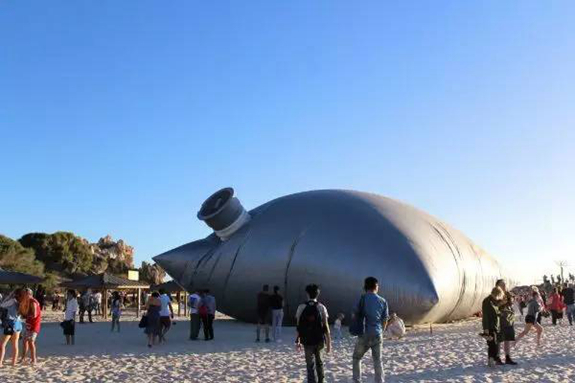
Norton Flavel, Bulk Carrier, Sculpture by the Sea 2014.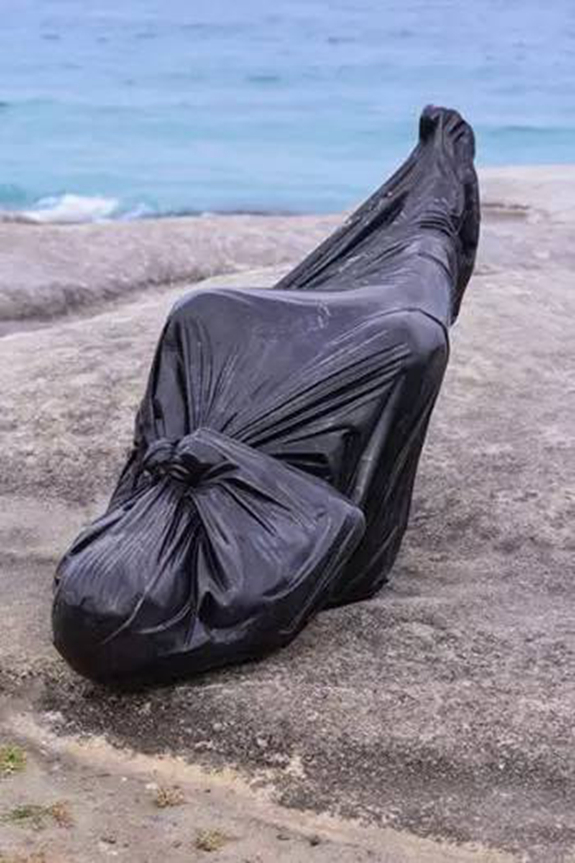
Lu Zhengyuan, Chronic Series No.1, Bondi, 2016.
This work by Chinese artist Lu Zhengyuan looks like someone suffocating inside, which scared the children.

David Handley is very fond of the work “1km Tower” created by sculptor Song Jianshu.
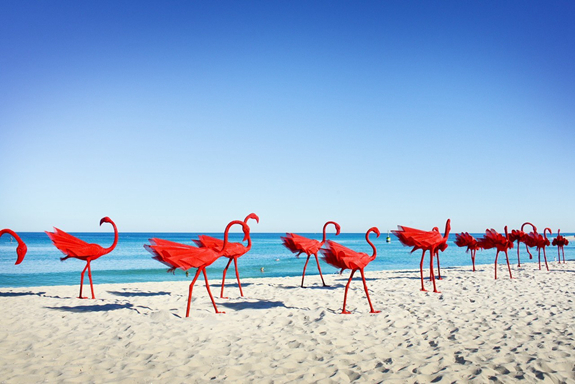
Zhang Wendi, mi no 5, Cottesloe 2015. Photo/Jarrad Seng.
Zhang Wendi won the People’s Choice Award in 2015.
David Handley said that they would hold an annual Sydney Sculpture Conference in Sydney, and this year would be in partnership with the German Sculpture Membership Organization. They hoped to hold a sculpture conference about China in 2018 when they also want to cooperate with Chinese sculpture art institutions.
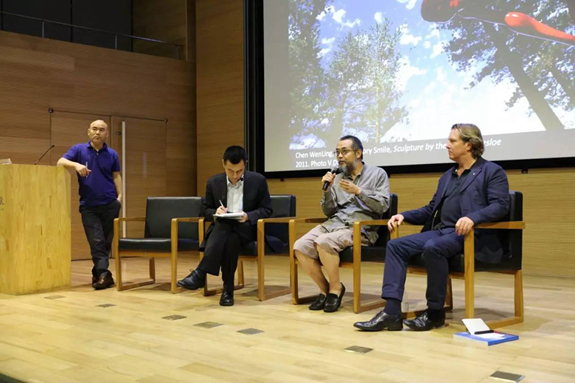
During the lecture
Subsequently, Professor Lv Pinchang walked on stage and invited Sui Jianguo to have a discussion. Professor Sui expressed his approval for David Handley’s concept that people should not only do things to their advantage but also must be beneficial to society. When asked about how he compared this exhibition with the art festivals and exhibitions held in China, he pointed out that the difference is that most of the Chinese art festivals are sponsored by local governments. While for countries adopting the Anglo-American system, their governments do not have a ministry of culture, so it must be non-governmental organizations that organize artistic and cultural activities, and only when they attract wide attention from the whole society to a certain extent can their governments start to support them with some funds. China has its own way of doing things, and Chinese artists and art circles will take this opportunity to promote art, which is also reasonable.
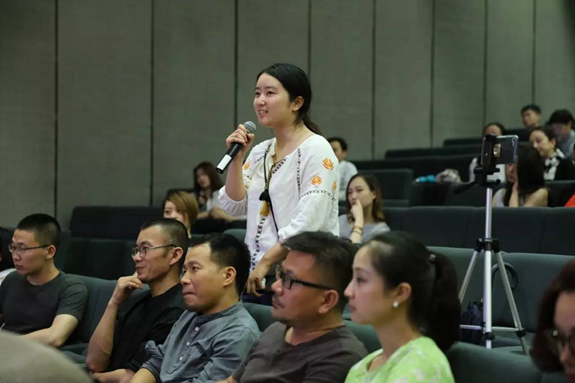
Q & A Time
In the end, Lv Pinchang thanked David Handley for his wonderful speech. They have spent 20 years to create an internationally influential public art event, which also provided an outstanding example for China. At the same time, they hope more Chinese artists can participate in this exhibition. The story of the “Sculpture by the Sea” continues, and there will be more, and better works in the future.
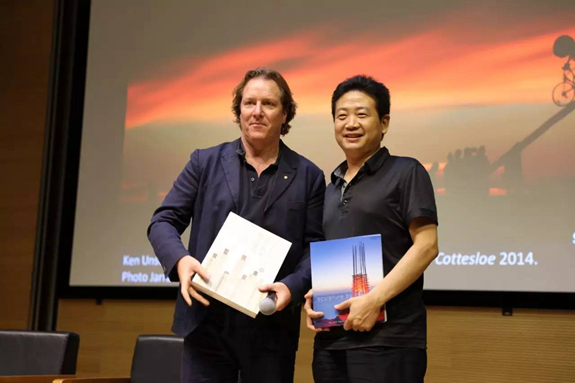
David Handley presented the 20th-anniversary catalogue of the “Sculpture By The Sea - Australia” to CAFA Art Museum.
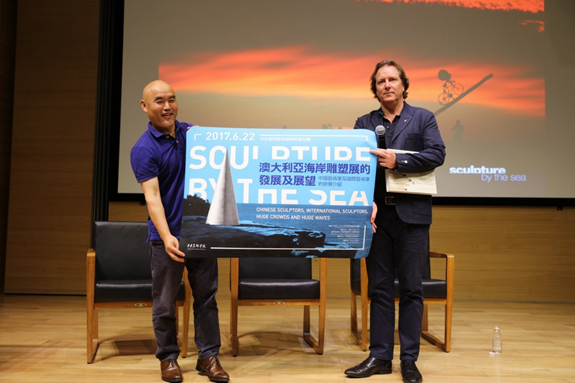
Presentation of the poster “Sculpture by the Sea”.
